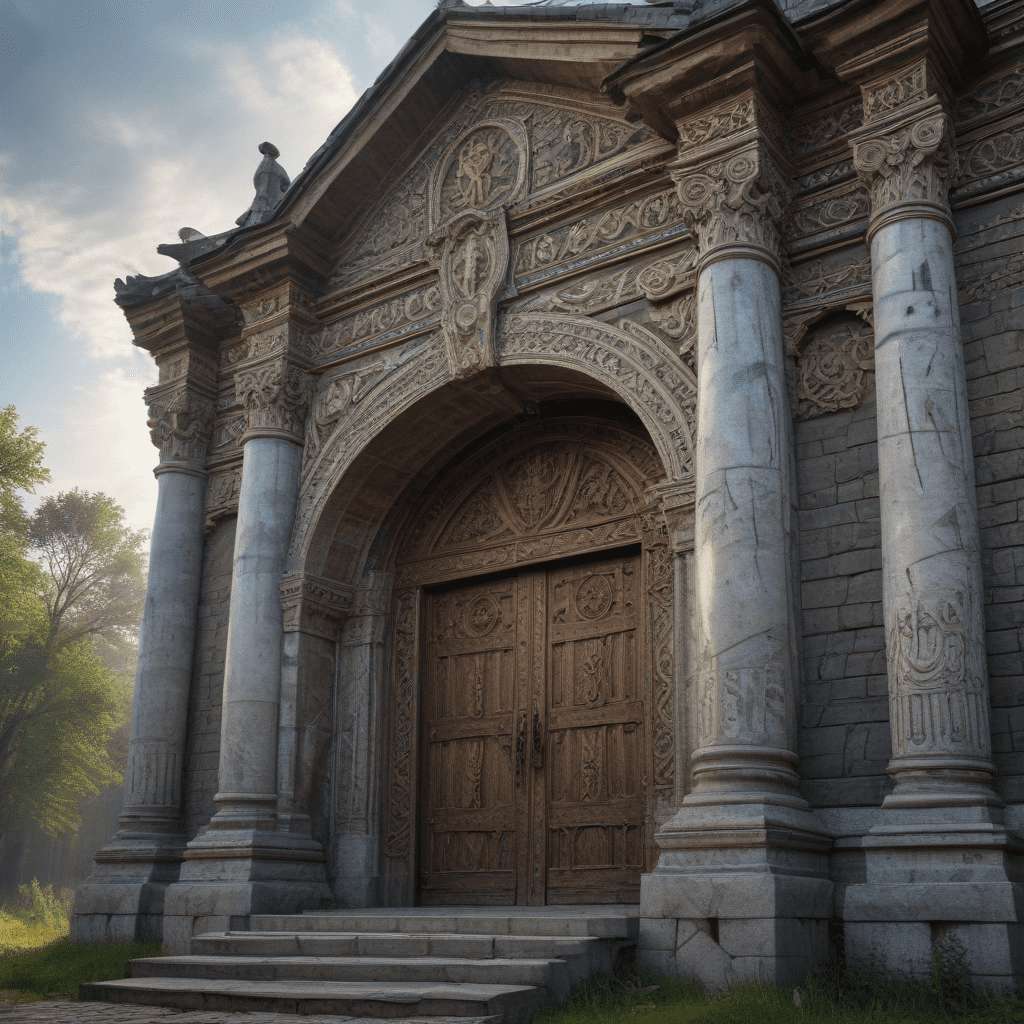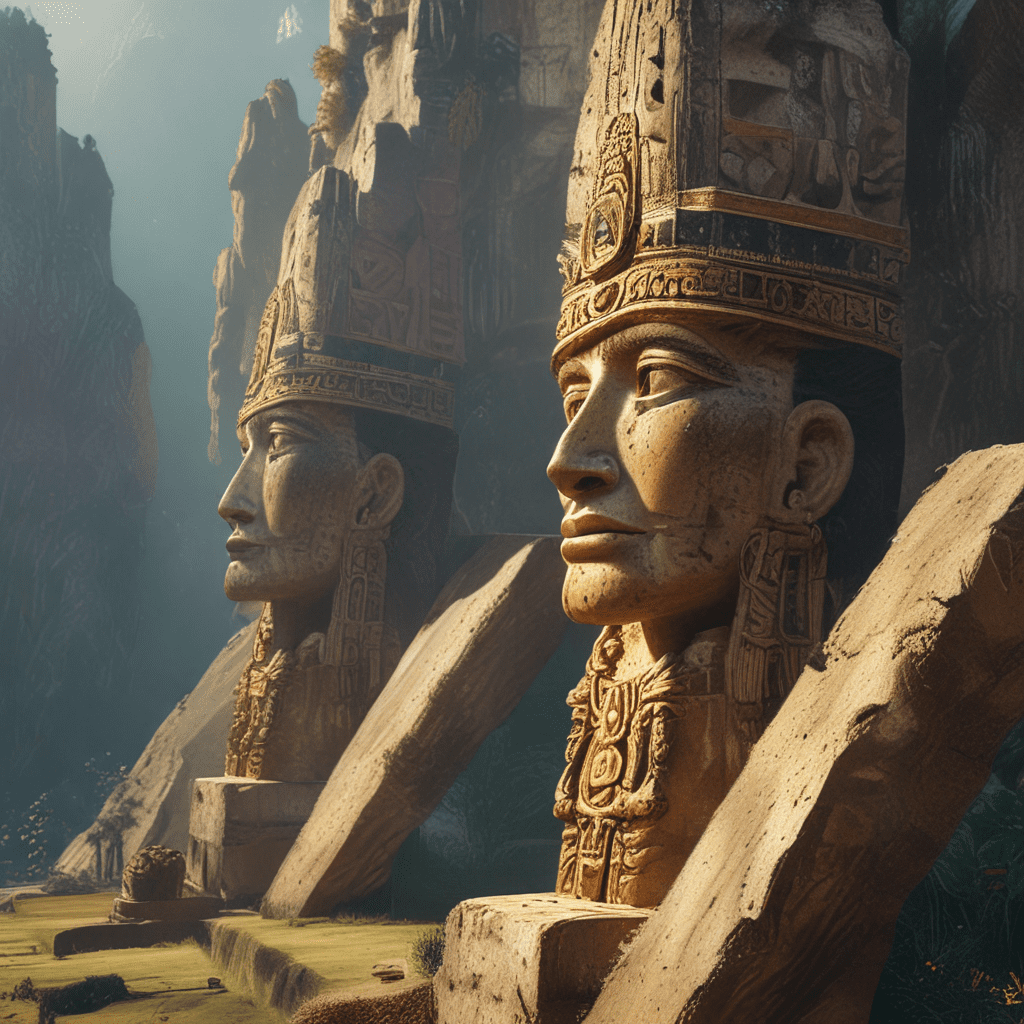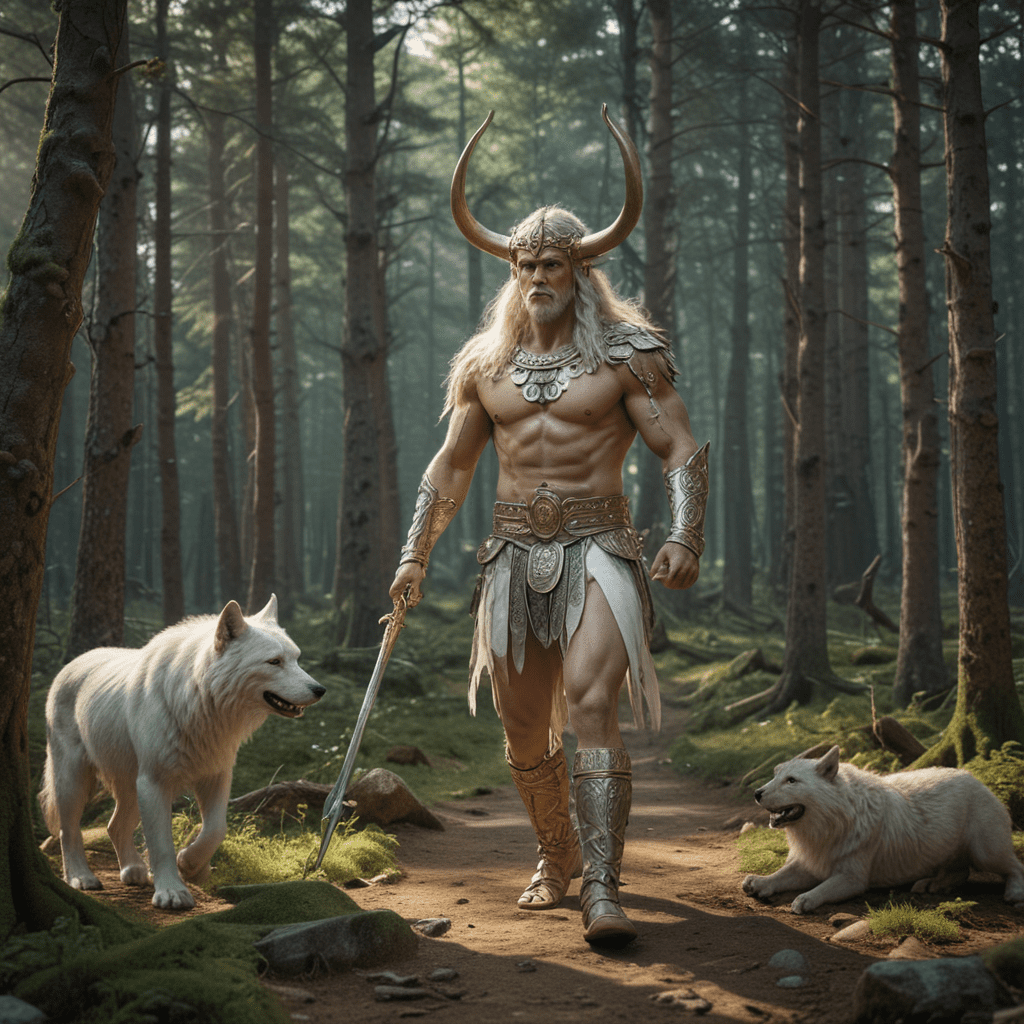1. Historical Roots of Slavic Mythology
Slavic mythology, a rich tapestry of beliefs and traditions, has its origins in the ancient Indo-European culture that spread across Europe during the Bronze Age. The Slavs, a diverse group of Indo-European tribes, settled in Eastern and Central Europe, bringing with them a shared mythology that evolved over centuries of interaction with the natural world and neighboring cultures. Slavic mythology is deeply intertwined with the landscape, seasons, and daily life of the Slavic people, shaping their architectural traditions and beliefs.
2. The Sacredness of Nature and Its Manifestation in Architecture
Nature held a profound significance in Slavic mythology, regarded as a living entity imbued with spiritual forces. Forests, rivers, and mountains were believed to be inhabited by spirits and deities, and trees were particularly revered as symbols of life and fertility. This reverence for nature is reflected in Slavic architecture, where natural elements are often incorporated into the design and decoration of buildings. Wooden houses and churches are often adorned with intricate carvings of plants, animals, and mythical creatures, blurring the boundaries between the natural and the built environment.
3. The Role of Ancestors and Family in Slavic Beliefs
Ancestors played a central role in Slavic mythology, serving as protectors and guides for the living. Families maintained strong bonds with their departed loved ones, honoring them through rituals and offerings. The concept of the family extended beyond the immediate household to include extended kin and even the entire community. This emphasis on family and lineage is evident in Slavic architecture, where houses are often designed to accommodate multiple generations and communal spaces are central to the design.
4. Protective Symbols and Talismans in Vernacular Architecture
Slavic mythology is replete with protective symbols and talismans believed to ward off evil spirits and bring good fortune. These symbols, often drawn from nature, are frequently incorporated into the design of vernacular architecture. Horseshoes, for example, are commonly placed above doorways to protect the home from harm, while other symbols, such as the sun, moon, and stars, are used to bring light and prosperity.
5. The Influence of Sun and Moon Worship on Design Elements
The sun and moon held great significance in Slavic mythology, representing the cycles of life and the interconnectedness of the natural world. Solar motifs, such as the use of circular windows and sunbursts, are prevalent in Slavic architecture, while lunar symbols, such as crescents and stars, are often used to decorate homes and ritual objects. The orientation of buildings also reflects the importance of the sun and moon, with houses often facing east to welcome the rising sun and windows placed to capture the moonlight.
6. Water as a Symbol of Life and Prosperity
Water was considered a sacred element in Slavic mythology, representing life, purification, and fertility. Rivers, lakes, and springs were believed to possess healing properties and were often the site of religious ceremonies. The importance of water is reflected in Slavic architecture, where water sources are frequently incorporated into the design of houses and villages. Wells, springs, and ponds are often placed in central locations, serving as gathering places for the community and providing a source of fresh water.
7. The Significance of Trees and Plants in Architectural Motifs
Trees and plants played a significant role in Slavic mythology, symbolizing growth, fertility, and the connection between the natural and supernatural worlds. Certain trees, such as the oak and birch, were considered sacred and were believed to be inhabited by spirits. The use of wood in Slavic architecture reflects this reverence for trees, with wooden houses and churches being common throughout the region. Trees and plants are often depicted in architectural carvings and motifs, adding a touch of nature to the built environment.
8. Animal Symbolism and its Expression in Decorative Elements
Animals held a special place in Slavic mythology, embodying various qualities and representing different aspects of the natural world. The bear, wolf, eagle, and snake were among the most revered animals and were often associated with deities and mythological heroes. Animal symbolism is prevalent in Slavic architecture, with decorative elements featuring animal carvings, motifs, and even entire structures inspired by animal forms.
9. The Duality of Good and Evil in Slavic Cosmology and its Reflection in Architecture
Slavic mythology is characterized by the duality of good and evil, represented by the forces of light and darkness. This duality is reflected in Slavic architecture, where protective symbols and talismans are used to ward off evil spirits, while architectural elements such as windows and doors are designed to allow light into the home and keep darkness at bay.
10. Contemporary Revival of Slavic Mythology in Architectural Design
In recent years, there has been a resurgence of interest in Slavic mythology, leading to a revival of its influence in architectural design. Contemporary architects are incorporating Slavic symbols, motifs, and materials into their work, creating buildings that connect the present with the past. This revival is a testament to the enduring power of Slavic mythology and its continued relevance to the cultural identity of the Slavic people.
FAQ
Q: What is the historical origin of Slavic mythology?
A: Slavic mythology has its roots in ancient Indo-European beliefs and practices, brought to Eastern and Central Europe by the Slavic tribes during the Bronze Age.
Q: How does nature influence Slavic architecture?
A: Nature is considered sacred in Slavic mythology, and its reverence is evident in Slavic architecture. Natural elements such as trees, water, and animals are incorporated into the design and decoration of buildings.
Q: What is the significance of ancestors and family in Slavic mythology?
A: Ancestors and family play a central role in Slavic beliefs, providing protection and guidance. This emphasis is reflected in Slavic architecture, where houses are often designed to accommodate multiple generations.
Q: What protective symbols are commonly used in Slavic architecture?
A: Slavic architecture incorporates various protective symbols and talismans, including horseshoes, sunbursts, and lunar crescents, to ward off evil spirits and bring good fortune.
Q: How does the duality of good and evil manifest in Slavic architecture?
A: Slavic mythology emphasizes the balance between good and evil, and this is reflected in architectural design through the use of protective symbols and the orientation of buildings to allow light into the home and keep darkness at bay.




